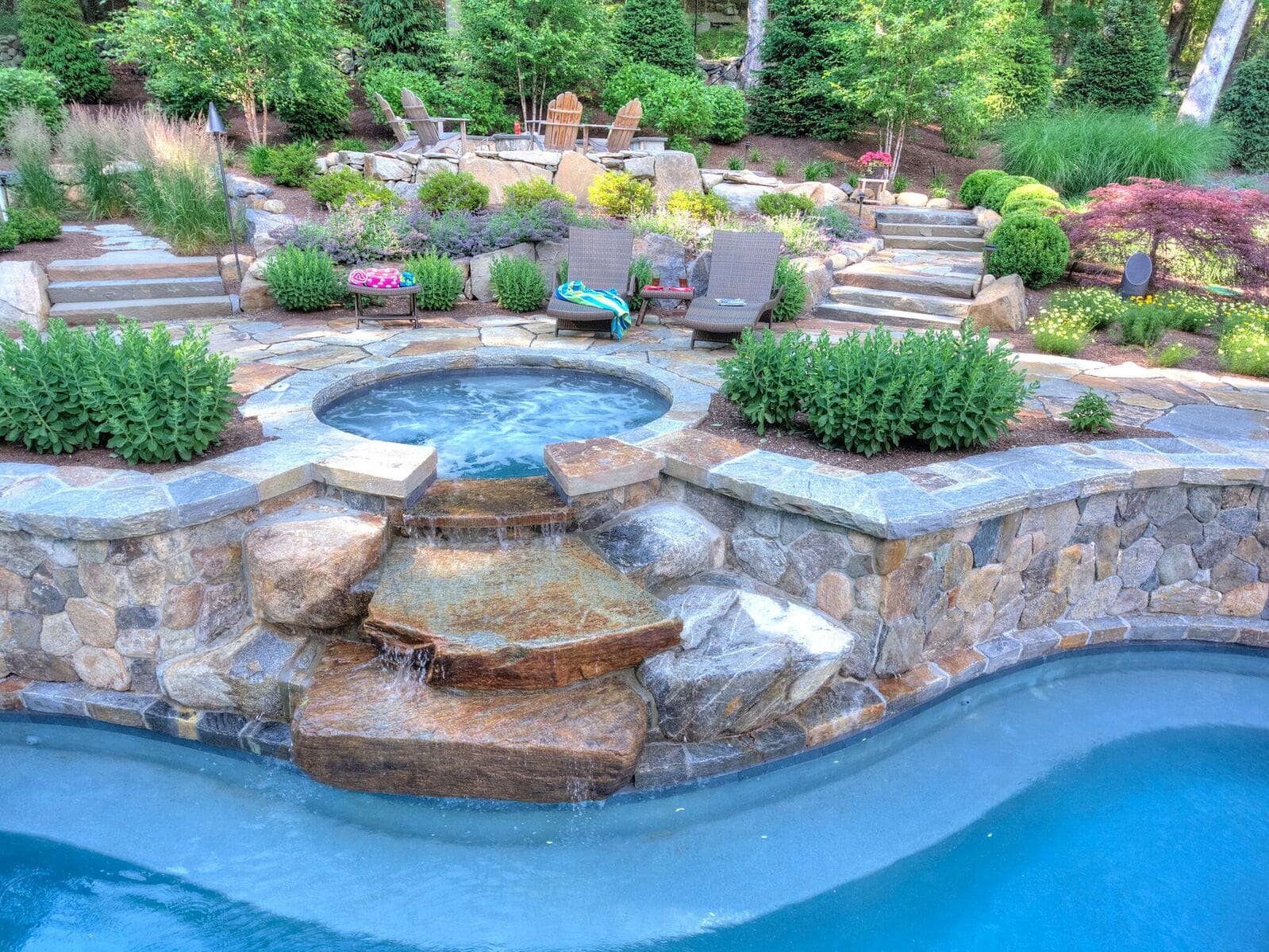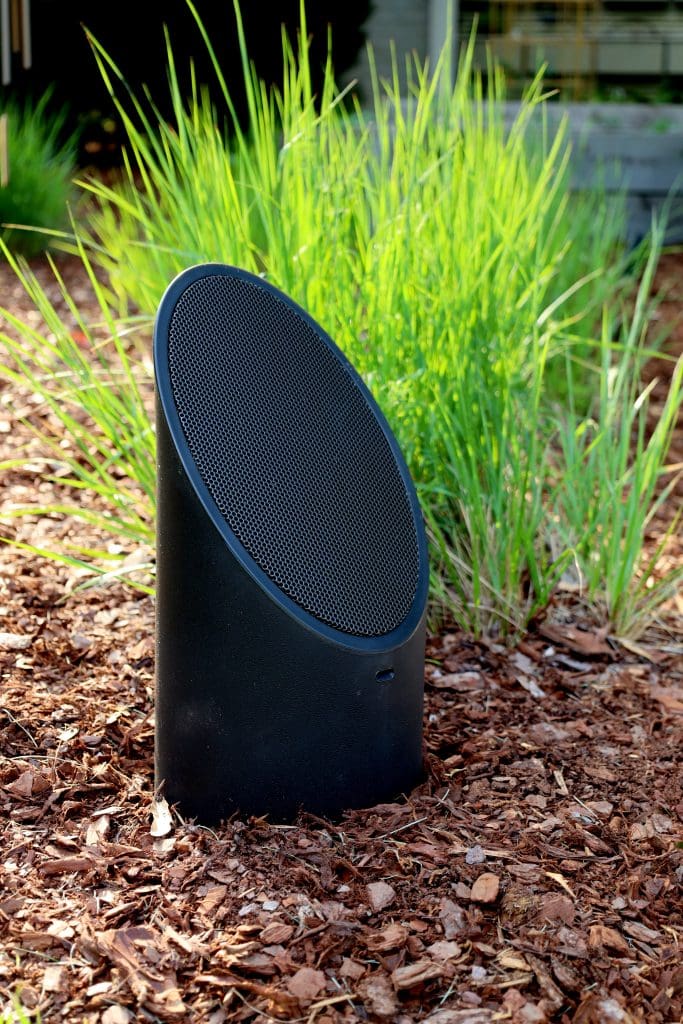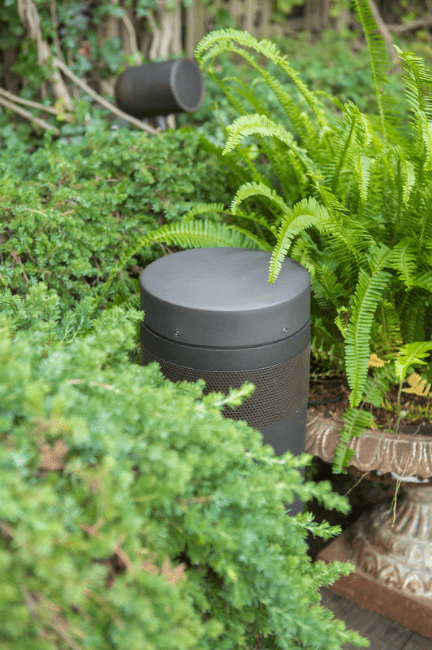
Photo: Hoffman Landscapes
As clients continue to invest in their outdoor living spaces, another feature they might be considering including is audio.
Matt Biron, a landscape architect for Hoffman Landscapes, based in Wilton, Connecticut, says around 50 percent of their client base is requesting for audio to be added to their landscapes right now. Sometimes they’re already working with an audio-visual company that has done their interior sound system. Their AV company will work in conjunction with Hoffman. Other times the client wants Hoffman to handle it as part of the overall landscape project.
Biron says often they do not have to pitch clients on adding audio, as they are more frequently working in conjunction with an AV company that handles the installation. He says these sound systems typically add anywhere from $10,000 to $20,000 to a project.

Meanwhile, Gardens of Babylon Landscapes, based in Nashville, Tennessee, has less than a quarter of their customers requesting outdoor audio during the design phase. Tim Nebel, operations manager for irrigation, lighting, and audio at Gardens of Babylon, says this could be due to them not being aware their company installs audio systems.
“Actually, whether or not a customer comes to us with an idea about outdoor audio, we typically do not make a pitch,” Nebel says. “Instead, we offer a free audio demonstration. If someone is looking for an outdoor audio system, testing it in their yard for an evening or over a weekend is an absolute must.”
He says their premium outdoor audio systems with Bluetooth or Sonos connectivity typically start around $3,500.
Installing Audio Tips
Biron says in the design process, they talk with clients to determine what spaces they want to have the audio focused. These are typically around gathering spaces like the pool, dining area or entertaining space.
“Incorporating audio is carefully considered like every other piece of those puzzles,” Nebel says. “For a natural landscape, our speakers are partially buried and hidden among the plants of a garden bed. For our more modern designs, the speaker locations are typically chosen for symmetry and – in both cases – for optimum sound quality.”

One major concern clients have is not wanting to disturb their neighbors, but if the speakers are directed and spaced out properly, this isn’t a problem.
“The site’s going to dictate to you how much the sound travels,” Biron says. “How much vegetation is there? Is there a grade change? Are there structures blocking the noise? Typically, if it’s designed and it’s directed properly, the sound sounds incredible when you’re in the space when you’re supposed to be hearing it. When you’re outside of that, the noise does diminish pretty quickly.”
Nebel adds that there are two ways they can affect sound dispersion when it comes to not bothering neighbors.
“Adding additional speakers (4 or more) is the best way to spread sound throughout the yard without cranking up the volume,” Nebel says. “Additionally, for those concerned with bass volumes, there is a technology coined ‘sub/zero’ which can be installed to enhance bass performance in front of the speakers while significantly reducing bass propagation behind them, creating a ‘quiet zone’ in the direction of a neighboring property.”

Nebel says while indoor home audio systems require on-site engineering, their outdoor speakers are pre-engineered for optimal sound quality. The team will work to determine the best placement of each speaker or subwoofer in the outdoor space.
“The speakers, which are partially buried in the landscape, are roto-molded in the same process used to construct YETI coolers,” Nebel says. “They are built to live outside permanently and require little to no maintenance.”
Biron says the biggest challenge when it comes to incorporating audio is hiding the speakers in the landscape without negatively affecting the sound quality. He says customers typically ask about speakers that look like rocks, but he directs people away from that option.
“I’d rather you look at it and go, ‘Okay yeah, that’s a speaker, I know it’s a speaker’ versus ‘What is that weird thing in the landscape?’” Biron says.
Nebel says their team can work with just about any space, including installing speakers within existing patios and retaining walls. He says the only challenge that might require outside assistance would be connecting an indoor audio system to the outdoor speakers with anything other than Sonos connectivity.
“All of our speakers are wired with ‘plug-and-play’ cabling, which means that each unit can be disconnected or reconnected in seconds,” he says. “With Sonos connectivity, there is also the option to integrate your outdoor system with an indoor ‘home audio’ system or – with either Sonos or Bluetooth – to keep the outdoor system separate from what you’re listening to inside your home.”

